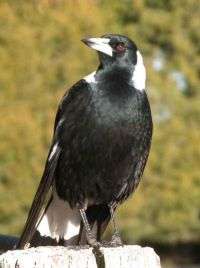Do animals think like autistic savants?

When Temple Grandin argued that animals and autistic savants share cognitive similarities in her best-selling book Animals in Translation (2005), the idea gained steam outside the community of cognitive neuroscientists. Grandin, a professor of animal science whose best-selling books have provided an unprecedented look at the autistic mind, says her autism gives her special insight into the inner workings of the animal mind. She based her proposal on the observation that animals, like autistic humans, sense and respond to stimuli that nonautistic humans usually overlook.
In a new essay published in the open access journal PLoS Biology, Giorgio Vallortigara and his colleagues, argue that, while Grandin’s book “shows extraordinary insight into both autism and animal welfare,” the question of equivalent cognitive abilities between savants and animals “deserves scrutiny from scientists working in animal cognition and comparative neuroscience.”
Vallortigara et al. argue that savant abilities—for example, exceptional skills in music, math, or art—come at a cost in other aspects of processing and, therefore, appear to be unrelated to the extraordinary species-specific adaptations seen in some taxa. Furthermore, the authors argue, rather than having privileged access to lower level sensory information before it is packaged into concepts, as has been argued for savants, animals, like non-autistic humans, process sensory inputs according to rules, and that this manner of processing is a specialized feature of the left hemisphere in humans and nonhuman animals.
At the most general level, they argue, “the left hemisphere sets up rules based on experience and the right hemisphere avoids rules in order to detect details and unique features that allow it to decide what is familiar and what is novel. This is true for human and nonhuman animals, likely reflecting ancient evolutionary origins of the underlying brain mechanisms.”
Grandin, who responds to the authors’ critique in a special commentary, suggests that “the basic disagreement between the authors and me arises from the concept of details—specifically how details are perceived by humans, who think in language, compared with animals, who think in sensory-based data. Since animals do not have verbal language, they have to store memories as pictures, sounds, or other sensory impressions.” And sensory-based information, she says, is inherently more detailed than word-based memories. “As a person with autism, all my thoughts are in photo-realistic pictures,” she explains. “The main similarity between animal thought and my thought is the lack of verbal language.”
Though Grandin appreciates the authors’ “fascinating overview of the most recent research on animal cognition,” she suggests that “further experiments need to be done with birds to either confirm or disprove Vallortigara et al.’s hypothesis that birds such as the Clark’s nutcracker, which has savant-like memory for food storage, has retained good cognition in other domains.
My hypothesis is that birds that have savant-like skills for food storage sites or remembering migration routes may be less flexible in their cognition.” Grandin welcomes the discussion following the publication of her book—we invite readers to join in that discussion by posting their own Reader Response.
Citation: Vallortigara G, Snyder A, Kaplan G, Bateson P, Clayton NS, et al. (2008) Are animals autistic savants" PLoS Biol 6(2): e42. doi:10.1371/journal. pbio.0060042 (www.plosbiology.org))
Source: Public Library of Science

















